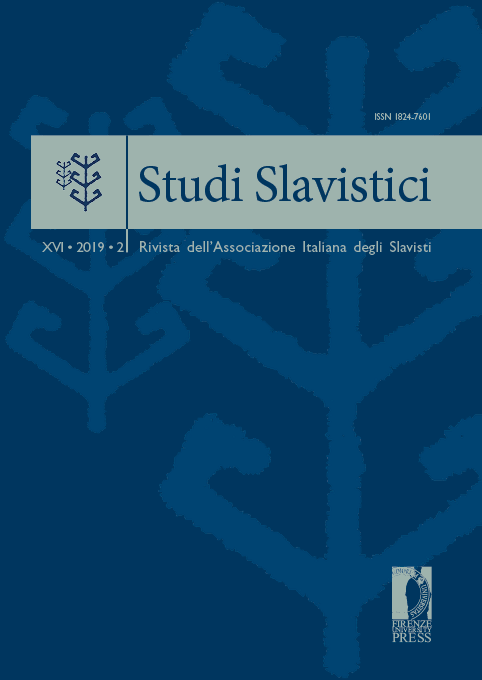Published 2020-01-20
Keywords
- Maximus the Greek,
- Textual Tradition,
- Nižnij Novgorod-Paris Collection,
- Textual Criticism,
- Glossary
- Author’s Corrections ...More
Abstract
The late 16th-century manuscript containing Maximus the Greek’s collected works, nowadays held in the National Library of France (Paris. Man. Slave 123), has attracted the attention of many contemporary scholars (А. Langeler, I. Ševčenko, M. Garzaniti, N. Sinicyna), who have studied its history as well as its text (in particular its glosses). In the introduction to the second volume of Maximus the Greek’s Works (2014), Sinicyna suggests that the archetype of this collection (the so-called Nižnij Novgorod-Paris Collection) should be considered primary in comparison to the Ioasaf and Chludov Collections. However, By means of thorough textological analysis of single works, the present article aims to challenge the conclusions of the main expert regarding Maxim the Greek’s textual heritage and to accurately place the Nižnij Novgorod-Paris Collection within the textual tradition. Through the analysis of glosses, insertions, and textual and grammatical variants, this article demonstrates how the process of redaction actually proceeded, leading us to a preliminary conclusion about the secondary nature of the text of the Nižnij Novgorod-Paris Collection if compared to its closest counterparts. Most likely, its protograph was compiled in the Trinity Monastery of S. Sergius during Maximus’ last years. A peculiarity of the textual history of the Nižnij Novgorod-Paris Collection is its correlation with the Ioasaf as well as with the Chludov manuscripts. This confirms Sinicyna’s intuition about the parallel development of the various collections, but does not demonstrate the primary character of the collection in 113 chapters. It is also important to define the place of the Nižnij Novgorod-Paris Collection within the range of late 16th-century collections: textological analysis of the first missives of Maximus show that the Nižnij Novgorod-Paris Collection is part of a larger group of manuscripts, such as the Rogožskoe Collection, which represents one of the main projects of 16th-century Russian scriptoria, but have nonetheless remained almost unstudied. It is likely the syntagmatic correlations between collections can be corrected by means of paradigmatic relationships.


